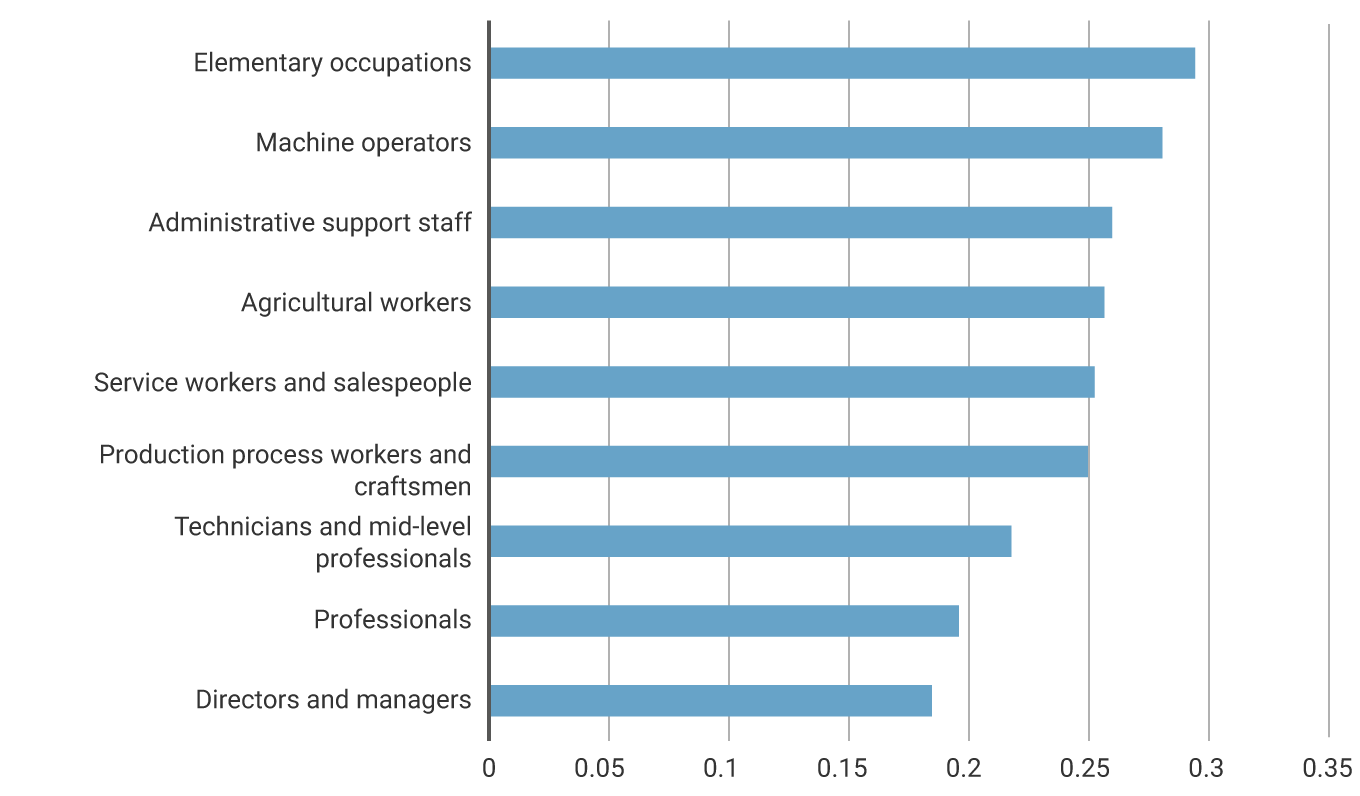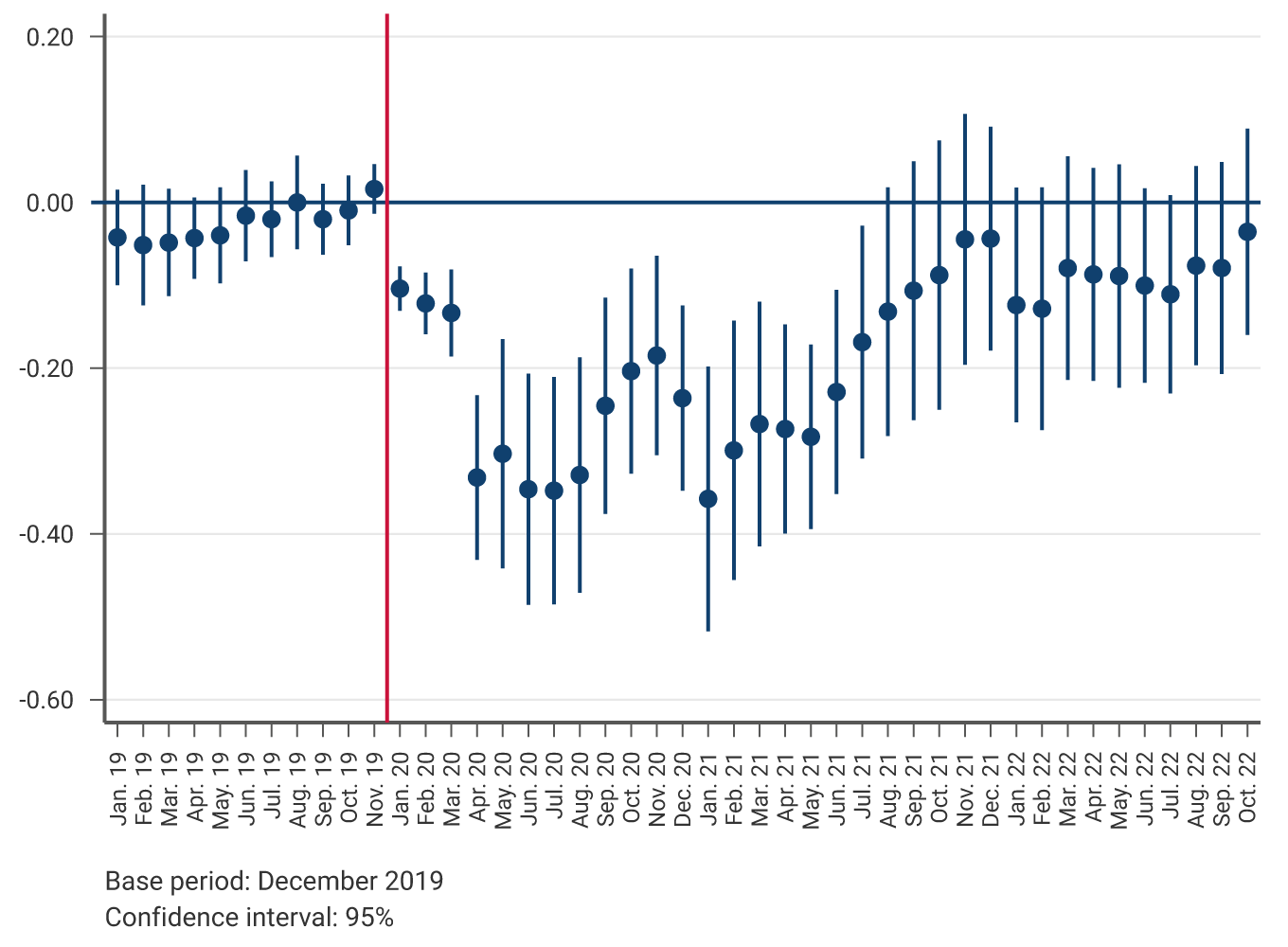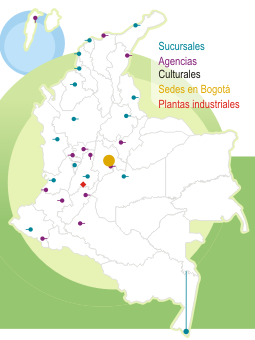The health crisis resulting from the COVID-19 pandemic compelled the implementation of measures to curb the spread of the disease. These measures, in turn, impacted both companies' decisions regarding staffing and workers' choices in the labor market. The uncertainty surrounding the duration of the pandemic and its effect on labor productivity, combined with these circumstances, could have created incentives to expedite the automation of jobs—essentially, the replacement of employment with various forms of capital. The specialized literature suggests that this phenomenon may have occurred in developed countries.
In an article in the Journal of Human Capital, researchers from Banco de la República (the Central Bank of Colombia) investigate whether the pandemic accelerated the process of labor automation in Colombia 1. To achieve this, they adapted an index to measure the degree of automatability of tasks performed in various occupations. The goal was to analyze whether labor demand behavior varied among occupations with different automation potentials. As a measure of labor demand, the authors used the number of vacancies registered in the Public Employment Service (Servicio Público de Empleo, in Spanish) and salaried employment data from the Great Integrated Household Survey (GEIH, in Spanish), conducted by the National Administrative Department of Statistics (DANE, in Spanish).
Graph 1 illustrates the average automation index values in Colombia for nine occupational categories. Notably, occupations in categories such as elementary, machine operators, and administrative support are more likely to be automated compared to categories such as directors, managers, or professionals . Among the most automatable occupations are couriers, laborers, and cargo workers, telephone operators, bank tellers, and window clerks. The study highlights a shift between 2019 and 2021, where the proportion of vacancies for professionals and technicians increased, while the proportion of elementary and administrative support occupations decreased. Simultaneously, there was a significant increase in investment in machinery and equipment, suggesting a potential acceleration of automation. The authors empirically test this hypothesis by estimating event study models that assess the differential effect of the pandemic on vacancies and total salaried employment based on the automation potential of different occupations.
Graph 1. Automation Index by Occupation

Source: Bonilla, et al (2023)
The primary outcome of the study is presented in Graph 2. The graph depicts the estimated coefficients that represent differences in variations in labor demand measured in terms of vacancies between occupations with higher potential for automation and those with low potential. These estimated effects are measured concerning the onset of the pandemic, denoted by the red line (December 2019). The results exhibit a significant decline in vacancies during the pandemic, particularly in occupations with the highest automation potential. This gap is both economically substantial and statistically significant for a year and a half, after which it becomes non-significant. Although the impact on the influx of new vacancies appears temporary, recent corrections have not been observed.
Graph 2. Results of the Estimate
Event study (vacancies logarithm ): automation

Source: Bonilla, et al (2023)
In more detail, the graph reveals that, prior to the pandemic, there were no significant differences in the growth figures exhibited by the most and least automatable occupations, as evidenced by the estimated coefficients close to zero. However, after the onset f the pandemic, a noticeable trend emerged, i.e., fewer vacancies were posted for more automatable occupations compared to their less automatable counterparts. The differential effect of the pandemic on vacancy behavior between these sectors exceeded 0.35 percentage points in the six months following the onset. Although the gap gradually narrowed, significant effects persisted until the third quarter of 2021. Similar differences were observed in salaried employment. These findings affirm that, during the pandemic, there were fewer job openings for occupations with higher automation potential compared to less automatable ones. These differences were substantial, statistically significant, lasting about a year and a half after the onset of the pandemic, and did not reverse in the post-pandemic period.
The authors also explore the extent to which the impact on the most automatable occupations was greater in the sectors most affected by mobility restrictions, i.e., those which, not being considered basic needs, were subjected to quarantines and whose workers could not attend their workplaces. In this regard, it was found that most of the estimated effects were driven by these sectors. This is an expected result, given that mobility restrictions could have altered the optimal allocation between capital and labor in firms by increasing the cost of labor relative to capital. However, the study shows that the reduction in demand for more automatable occupations is not explained by the fact that these occupations require greater physical proximity between workers. By rejecting this hypothesis, the paper reinforces the argument that the changes are due to a restructuring of the factors of production and not to a fear of contagion.
Finally, analyses with different segments of salaried workers show that the automation process had differential effects on workers according to their age, gender, and productivity. The results suggest that the effects found are mainly due to the impact on workers over 40 years of age, for whom the gap between more and less automatable occupations was larger and longer. In terms of gender, automation affected the female labor market more severely. And in terms of productivity, which is approximated by the worker's salary relative to the minimum wage, there is a greater effect on workers with salaries equal to the minimum wage, especially at the beginning of the pandemic; however, there is also a negative and significant effect for those with higher salaries.
1 Bonilla, L., Flórez, L. A., Hermida, D., Lasso, F., Morales, L. F., Ospina, J. J., Pulido, J. (2023). Is the Covid-19 pandemic fast-tracking automation in developing countries? Evidence from Colombia. Journal of Human Capital (próximamente).








































































